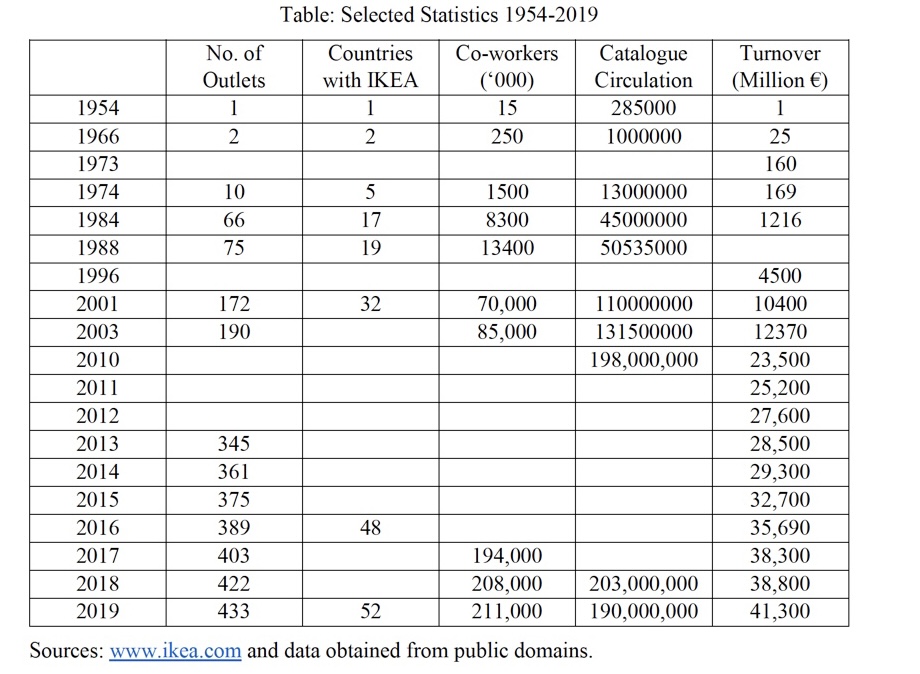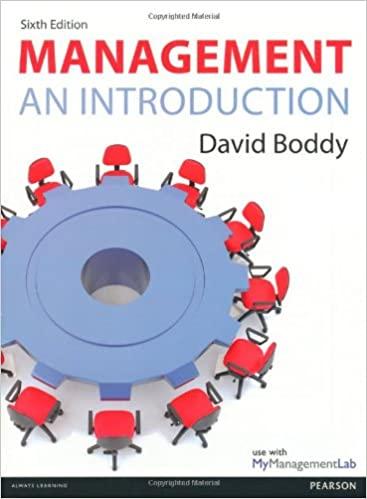Question
Question: Looking forward, from the perspectives of globalization, organizational effectiveness and change, what challenges will IKEA be facing if it had to sustain its growth
Question: Looking forward, from the perspectives of globalization, organizational effectiveness and change, what challenges will IKEA be facing if it had to sustain its growth trajectory, particularly in Asia.
SECTION 1(60%)
IKEA: A Success Story and the Challenges Going Forward
The furniture and furnishings industry is a mature one, not one which, superficially at least, lends itself to creative strategic thinking, to global activity, or even to innovation. It is an industry with relatively stable, slowly growing markets, and is very much part of the old economy.
IngvarKampradfounded IKEAinSwedenin1943asamail-ordercompany.ThenameIKEA is an acronym for Ingvar Kamprad Elmtaryd (the name of his family farm) Agannaryd (the name of his home village). Its Swedish origins are unmistakable even today, although it has moved its management centre to the Netherlands. Kamprad is a man with a clear vision and philosophy:
?He wished to promote the 'democratization of consumption' by offering good value furniture and furnishings at a price that all couldafford.
?He believed that everyone deserved to have an aesthetic sensitivity enhanced rather than diminished by the immediateenvironment.
?Hebelievedinanon-hierarchicalworldandwasdistinctlyanti-bureaucraticinhisattitudes.
?He wished to empower hisstaff.
?He wanted to set a good example of frugal living, travelling economy class and sharing hotel rooms with his sons on business trips when they worked forIKEA.
IKEA opened its first showroom ten years after it was founded. Initially the growth of IKEA was steady and gradual. Only internal funding was used to support the growth, and therefore significant debt avoided. The norm was to reinvest the equivalent of at least 15% of revenue eachyear.Startingintheearly1960sandforseveraldecadesthereafter,IKEAwaswellsetfor a trajectory of growth which consists of four distinctstages:
?The first, starting in 1963, was restricted to the Scandinavianregion.
?The second, from 1973, saw an extension to Western Europe, which was to become her major market centre, with Germany at its heart. This move into an area with a similar culture and a similar market was relativelysmooth.
?The next move, in 1974, beginning very quickly after the second, was the expansion into North America - first into Canada but then gradually into the USA. The initial strategy came under pressure during this stage, but the difficulties wereovercome.
?The final stage, as difficult as the move into North America, was first into Eastern Europe andnextintoAsia,both undertakenduringthe1990s.Bothmoveshavebenefitedfromthe previous move into the USA. This expansion is still inprocess.
Thus, over the past seven decades, IKEA has grown from a family-owned and operated company into a global giant in the furniture manufacturing and retail business with a sophisticated supply chain and organization. Inter IKEA Holding B.V. ('the Company') is the ultimate parent company of the Inter IKEA Group ('the Group'). The Company is ultimately controlled by Interogo Foundation. The Group consists of three core businesses: Franchise, Range & Supply, and Industry. These three core businesses work together with franchisees and suppliers to co-establish an even better IKEA offer and franchise system. The aim is to provide franchisees with the best possible conditions for implementing and operating the IKEA Concept, and to produce a strong platform for future expansion and growth.
AsatendofAugust2018,therewere421IKEAstoresoperatedby11franchisees.Franchisees implement the IKEA Concept by marketing and selling the IKEA product range. Except for the IKEA Delft store in the Netherlands, all IKEA stores are operated under franchise agreements with Inter IKEA Systems B.V. Each franchisee has the responsibility to run, manage and develop its local business. All franchisees are independent from and unrelated to Inter IKEA Group. Franchise offers the IKEA Concept to IKEA franchisees worldwide. It includes Inter IKEA Systems B.V. - owner of the IKEA Concept and the IKEA franchisor - and its relatedbusinesses.
Franchise, together with the franchisees, continuously develops the IKEA Concept to ensure its successful implementation in new and existing markets. This enables IKEA to remain forward-looking in areas such as brand development, retail methods, sustainability, market potential and expansion. Range & Supply works under assignments from Inter IKEA Systems
B.V.RangeismainlyresponsiblefordevelopinganddesigningtheoverallIKEAproductrange, includingfood,homeelectronicsandfurnishings.Theyalsoownacommunicationagencythat creates and produces IKEA communication for customers and other IKEAorganizations.
Supply maintains relationships with suppliers, procures finished IKEA products, and then suppliestheseproductstoIKEAretailersaroundtheworld.IndustrymanufacturesIKEAhome furnishing products and develops unique IKEA capabilities and capacities in relevant parts of the value chain (e.g., material and manufacturing). Industry produces approximately 10-12% ofthetotalIKEArange,focusingmainlyonwood-basedfurniture.Itsoperationsareconducted throughsome40productionunitsthatincludeforestry,sawmills,aswellasproductionofboard materials, wood components and assemble-readyfurniture.
The Group's governance is also organized through the three core businesses with the related control, risk management structures and compliance tailored to their specific business characteristics. The Group's governance structure is based on two main considerations: to secure the growth and development opportunities of the IKEA Brand and the IKEA Concept, and to guarantee the Group's independence and ability to maintain a long-term perspective.
Today, in Asia, IKEA has established its markets in Hong Kong, Japan, mainland China, Malaysia, India as well as other Asian locations. It is a sign of its confidence that it has the capability of operating in diverse cultures and markets, some of those are more difficult than others. The aim has always been 'to bring the IKEA concept to as many people as possible'. IKEA has today become the world's largest home furniture and furnishings retail chain.
The table below provides some growth statistics of IKEA. It is helpful in terms of providing a snapshot of the success of the business over the past several decades.

Step by Step Solution
There are 3 Steps involved in it
Step: 1

Get Instant Access to Expert-Tailored Solutions
See step-by-step solutions with expert insights and AI powered tools for academic success
Step: 2

Step: 3

Ace Your Homework with AI
Get the answers you need in no time with our AI-driven, step-by-step assistance
Get Started


